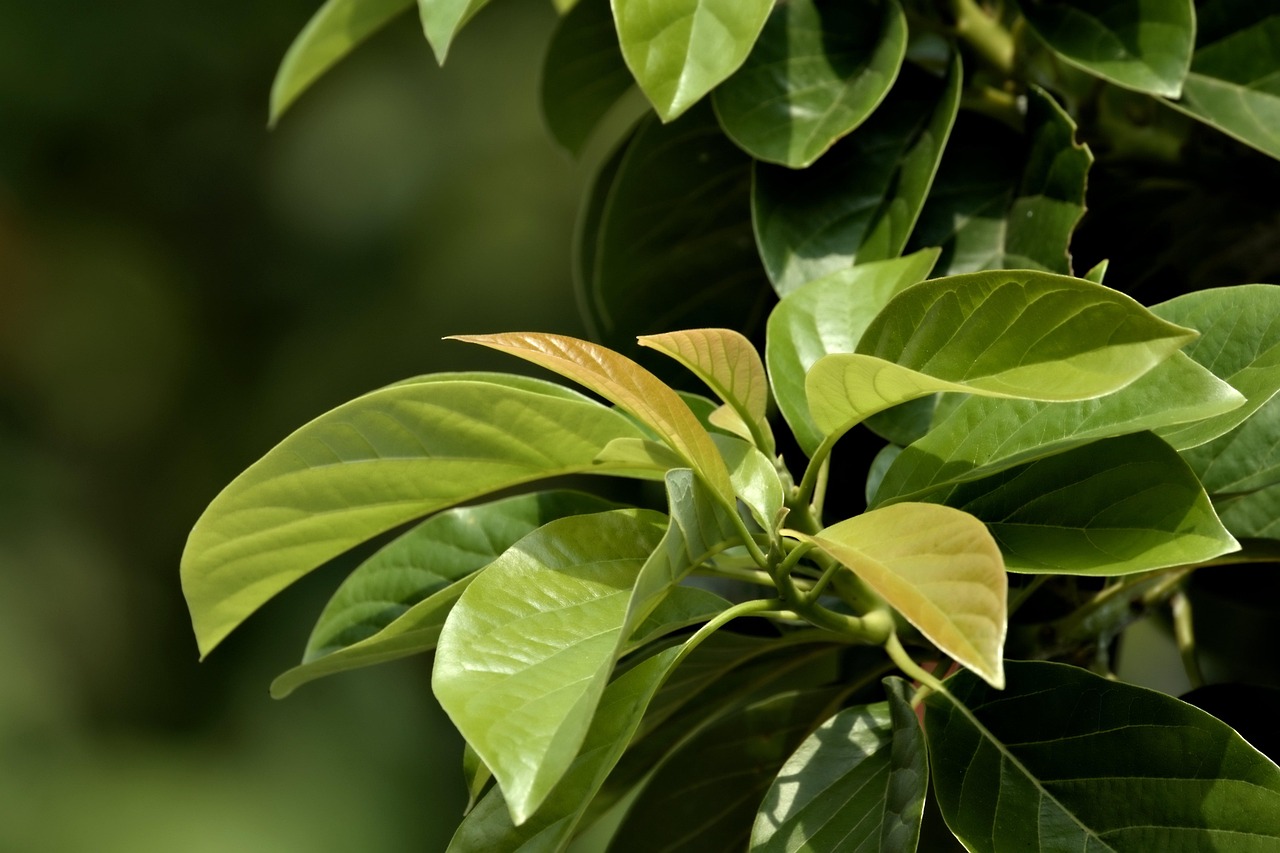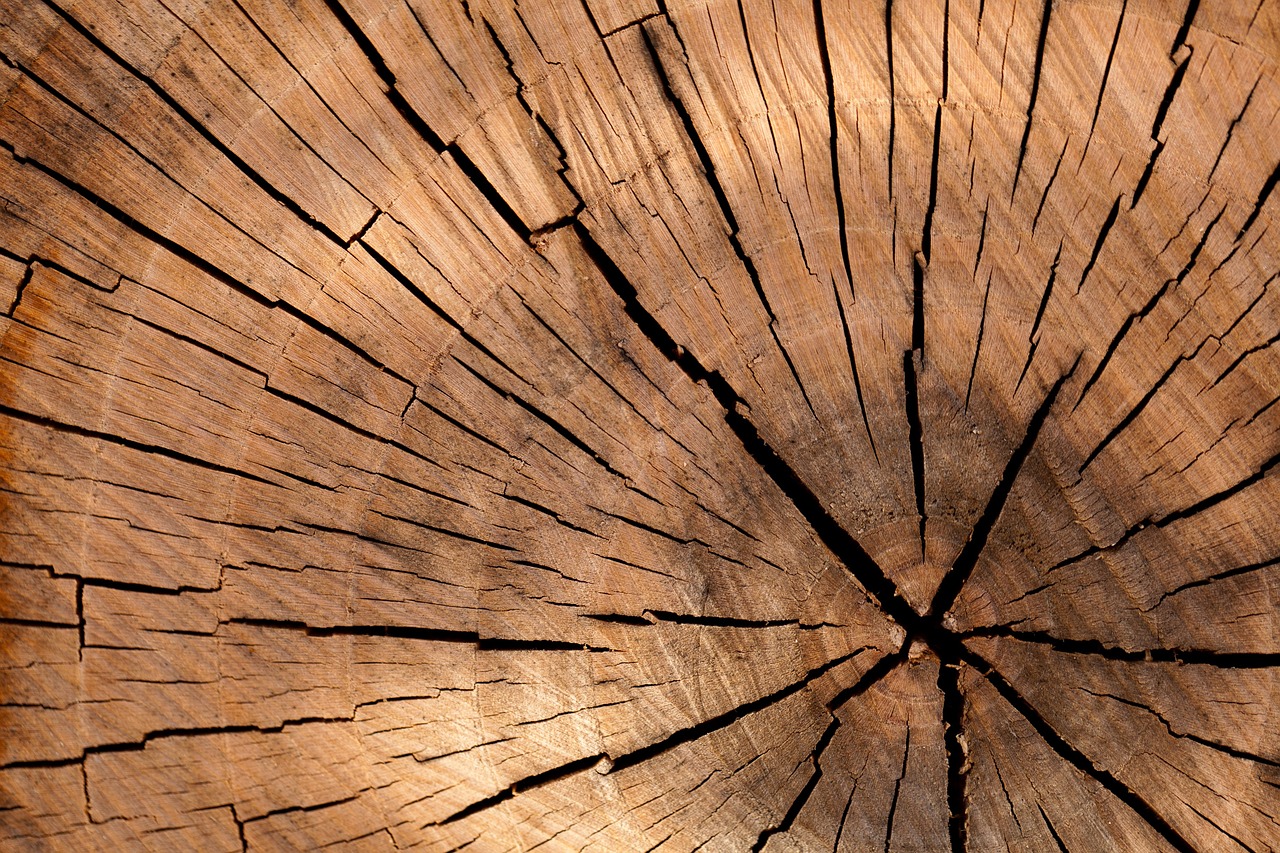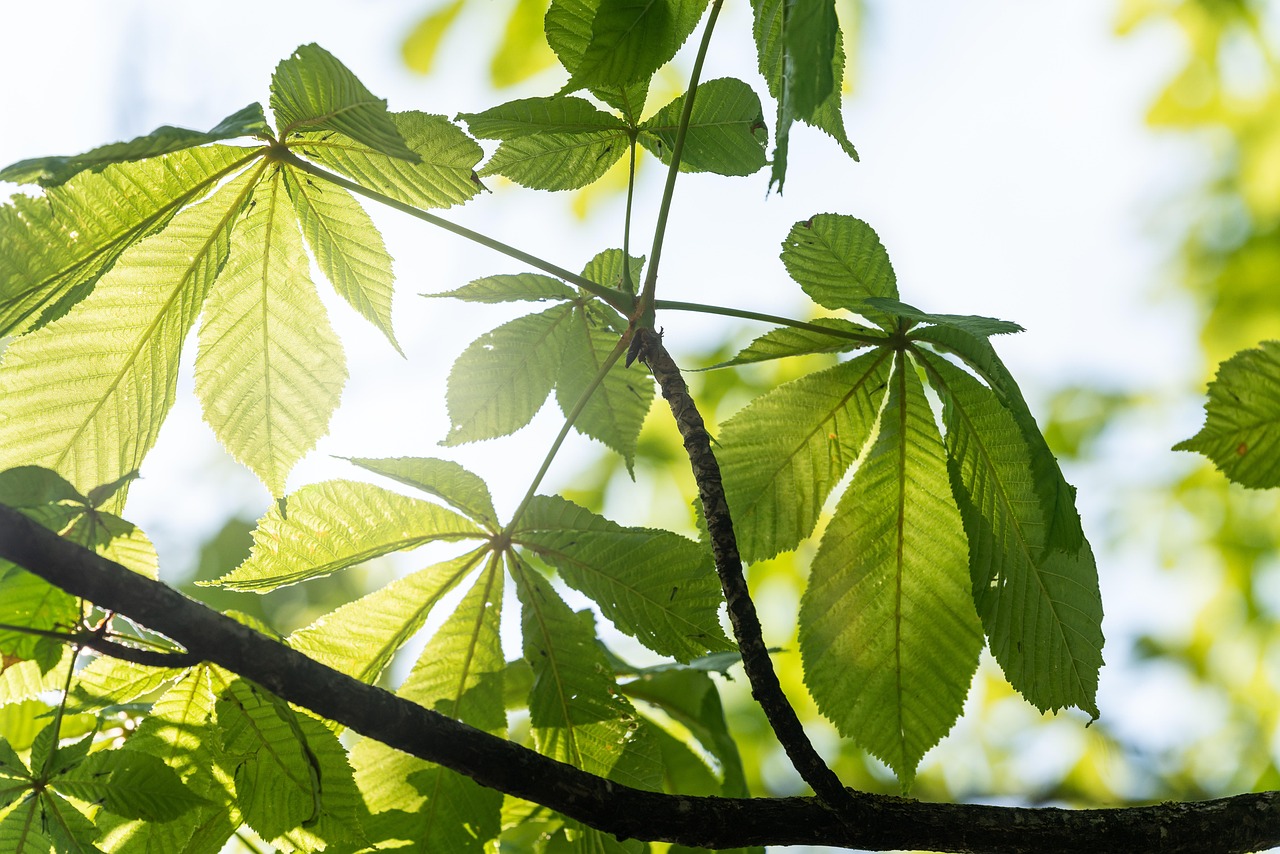Tree growth rates vary significantly by species, influenced by factors like climate, soil type, and water availability. Fast-growing species, such as the Eastern Cottonwood, can reach maturity in 10 to 15 years, while slower species like the Oak may take several decades.
Understanding Tree Growth Rates
Tree growth rates are crucial for understanding forest dynamics, ecological balance, and timber production. Different tree species exhibit varying growth patterns due to genetic factors, environmental conditions, and management practices. These growth rates can affect everything from carbon sequestration to habitat availability for wildlife.

Growth rates are typically measured in terms of height and diameter increase over time. They can be affected by several factors, including:
- Species Type: Different species have intrinsic growth characteristics.
- Climate: Temperature, rainfall, and seasonal changes play significant roles.
- Soil Quality: Nutrient availability and soil structure influence growth.
- Water Availability: Adequate water supply is essential for optimal growth.
- Management Practices: Careful cultivation and maintenance can enhance growth rates.
This information is valuable for landowners, forestry professionals, and ecologists who aim to maximize growth for timber production or conservation purposes. Understanding these rates helps in making informed decisions about planting and managing different tree species.
Comparative Analysis of Growth Rates
A comparative analysis of tree growth rates involves studying various species under similar conditions to determine which trees grow faster. This analysis often includes both hardwood and softwood species. Fast-growing trees are typically sought after for timber production because they can be harvested sooner.

| Tree Species | Average Height Growth (Feet/Year) | Average Diameter Growth (Inches/Year) | Time to Maturity (Years) |
|---|---|---|---|
| Eastern Cottonwood | 3-5 | 1-2 | 10-15 |
| Loblolly Pine | 2-3 | 0.5-1 | 20-25 |
| Red Oak | 1-2 | 0.5-1 | 30-50 |
| White Birch | 2-4 | 0.5-1.5 | 20-30 |
| Sugar Maple | 1-2 | 0.5-1 | 30-40 |
The table above summarizes the average growth rates of several tree species commonly found in North America. It highlights how some trees like the Eastern Cottonwood grow significantly faster than others like the Red Oak. This information is essential for land management decisions, especially when considering reforestation or afforestation projects.
In addition to species-specific growth rates, the location plays a vital role in determining how well a tree will grow. Trees planted in optimal conditions, such as rich soil and ample sunlight, are likely to exhibit faster growth than those in less favorable settings. Additionally, understanding the local ecosystem can help predict how introduced species will perform compared to native trees.
Forestry practices also contribute to tree growth rates. Thinning forests can reduce competition for resources among trees, promoting faster growth for the remaining specimens. This practice is especially relevant for commercial forestry operations aiming to maximize timber yield.

In summary, analyzing tree growth rates by species allows for better planning and management of forests. The comparative analysis provides insights that help in selecting appropriate species for specific environments, thereby enhancing both economic and ecological outcomes.
Factors Influencing Tree Growth Rates
Understanding tree growth rates requires a deep dive into the various factors that influence these rates. Each species responds differently to environmental conditions, and these interactions shape their growth patterns. Key factors include:
- Genetics: The inherent genetic makeup of a species dictates its growth potential.
- Soil Composition: Nutrient levels and soil pH can significantly affect growth.
- Climate Conditions: Temperature, precipitation, and seasonal variations are crucial.
- Water Availability: Access to water greatly impacts a tree’s ability to grow.
- Light Exposure: Sunlight is vital for photosynthesis, influencing growth rates.
Genetics and Species Characteristics
The genetic traits of a tree species determine its growth habits. For example, some species have rapid initial growth, while others may have slower but steady growth over time. Fast-growing species can be advantageous for timber production but may require more management to sustain health and vitality.
Some examples of fast-growing trees include:

- Eucalyptus: Known for its quick height gain, reaching up to 10 feet in a year under ideal conditions.
- Red Maple: Grows rapidly, often achieving 2 to 3 feet per year.
- Ponderosa Pine: Can reach heights of 3 feet annually in favorable environments.
Soil Quality and Nutrient Availability
The soil in which a tree is planted plays a significant role in its growth rate. Healthy soil contains a balance of minerals, organic matter, and microorganisms that support tree health. Key soil components affecting growth include:
- Nitrogen: Essential for leaf and stem growth.
- Phosphorus: Important for root development.
- Potassium: Helps with overall plant health and disease resistance.
Soil pH also affects nutrient availability. Most trees prefer soil pH levels between 6.0 and 7.5, where nutrients are most accessible. Regular soil testing can help landowners manage soil health effectively.
The Role of Climate in Tree Growth
Climate is one of the most critical factors affecting tree growth rates. Trees have adapted to specific climatic conditions, and changes in temperature and precipitation can significantly impact their growth. Key climatic factors include:
- Temperature: Ideal temperatures promote photosynthesis, while extreme temperatures can hinder growth.
- Rainfall Patterns: Consistent rainfall helps maintain moisture levels in the soil.
- Seasonal Changes: Different species have varying responses to seasonal changes, affecting their growth cycles.
For instance, trees in temperate climates may have a distinct growing season during warmer months. In contrast, tropical species may grow year-round if water availability is sufficient.
Water Availability and Irrigation Practices
Water is vital for photosynthesis and overall tree health. Trees that receive adequate water tend to grow faster than those that do not. Water availability depends on factors such as rainfall, drainage, and irrigation practices. In areas with limited rainfall, proper irrigation becomes essential for sustaining healthy growth rates.
Irrigation methods can include:
- Drip Irrigation: Delivers water directly to the roots, reducing waste.
- Sprinkler Systems: Mimics natural rainfall, covering larger areas.
- Flood Irrigation: Involves flooding fields with water; effective in certain soils but less efficient.
The choice of irrigation method can significantly influence the long-term health and growth rates of trees, especially in arid regions.
The Impact of Light on Tree Growth
Light exposure is crucial for photosynthesis, the process by which trees convert sunlight into energy. Trees that receive ample sunlight typically exhibit better growth rates. However, not all species require the same amount of light. Some trees thrive in full sun, while others prefer partial shade.
Strategies to improve light exposure include:
- Pruning: Removing lower branches can allow more light to reach other parts of the tree.
- Site Selection: Planting trees in open areas rather than shaded locations enhances light access.
- Avoiding Overcrowding: Sufficient spacing between trees reduces competition for light.
Understanding these aspects of light and their influence on tree growth can lead to more effective forest management practices.
Tree Species Selection for Optimal Growth
Selecting the right tree species is vital for achieving desired growth rates in a specific environment. Different species have varying growth rates, and their adaptability to local conditions can significantly influence their performance. Understanding these factors aids in making informed decisions for forestry projects, landscaping, and reforestation efforts.
Native vs. Non-Native Species
When considering tree species for planting, one critical decision is whether to use native or non-native species. Native trees are those that naturally occur in a particular region, while non-native trees are introduced from other areas.
Advantages of using native species include:
- Adaptation: Native trees are well-adapted to local soil, climate, and wildlife.
- Biodiversity Support: They provide habitat and food for local wildlife.
- Lower Maintenance: Native species often require less water and care once established.
On the other hand, non-native species may offer rapid growth or unique aesthetics. However, they can sometimes become invasive, competing with native trees and disrupting local ecosystems. Therefore, careful consideration is necessary when selecting non-native species.
Growth Rate Variability Among Species
The growth rate of a tree species can vary widely based on its genetic traits and environmental conditions. Here are some examples of various tree species along with their typical growth rates:
| Tree Species | Common Growth Rate (Feet per Year) | Typical Mature Height (Feet) | Preferred Soil Type |
|---|---|---|---|
| Pine (Eastern White) | 2-3 | 50-80 | Sandy to Loamy |
| Birch (River Birch) | 3-4 | 40-70 | Wet to Moist |
| Maple (Silver Maple) | 2-5 | 50-80 | Moist, Well-drained |
| Willow (Weeping Willow) | 3-7 | 30-50 | Wetlands, Moist Soils |
| Redwood (Coastal Redwood) | 2-3 | 200-300 | Sandy Loam |
This table illustrates how different tree species exhibit varying growth rates and environmental preferences. For example, the River Birch grows rapidly compared to the Eastern White Pine, which grows at a more moderate pace. Understanding these differences assists in selecting appropriate species for specific planting goals.
Cultural Practices That Enhance Growth Rates
The growth rates of trees can be improved through various cultural practices. These practices help create optimal conditions for tree health and growth, ensuring that trees reach their full potential.
Pruning Techniques
Regular pruning is essential for maintaining tree health and promoting growth. Pruning can help:
- Remove Dead or Diseased Branches: This prevents disease spread and improves overall tree vitality.
- Encourage Strong Structure: Proper pruning fosters a well-balanced tree structure, reducing the risk of breakage.
- Enhance Light Penetration: Allowing more light into the canopy can boost photosynthesis and growth rates.
Nutrient Management
Nutrient management is crucial for supporting tree growth. Fertilizers can be applied based on soil tests to ensure that trees receive the necessary nutrients. Common nutrients that benefit tree growth include:
- Nitrogen: Promotes leaf and stem growth.
- Phosphorus: Supports root development and flowering.
- Potassium: Enhances overall plant health and disease resistance.
Additionally, organic amendments like compost can improve soil structure and nutrient availability over time.
Irrigation Management
Irrigation management is another critical practice that influences tree growth rates. Implementing effective irrigation techniques ensures trees receive adequate moisture, especially during dry periods. Strategies include:
- Monitoring Soil Moisture: Regularly checking soil moisture levels helps prevent over- or under-watering.
- Using Mulch: Applying mulch around the base of trees retains moisture and suppresses weeds.
- Drought-Tolerant Species: Selecting drought-resistant species can reduce reliance on irrigation in water-scarce areas.
By employing these cultural practices, landowners and forestry professionals can enhance tree growth rates and ensure sustainable management of woodland resources.
Challenges to Tree Growth and Management
While many factors positively influence tree growth rates, several challenges can impede their development. Understanding these challenges is essential for effective tree management and ensuring healthy forest ecosystems.
Pests and Diseases
Pests and diseases are among the most significant threats to tree health. Infestations can stunt growth, weaken trees, and even lead to death if not managed effectively. Common pests include:
- Bark Beetles: These pests bore into the bark, disrupting the flow of nutrients and water.
- Gypsy Moths: Their caterpillars feed on leaves, defoliating trees and reducing photosynthesis.
- Asian Longhorned Beetle: This invasive species can kill hardwood trees by boring into their trunks.
To manage these threats, regular monitoring and integrated pest management strategies should be employed. This may include biological controls, such as introducing natural predators, or chemical treatments when necessary.
Environmental Stressors
Environmental stressors, such as droughts, floods, and extreme temperatures, can also adversely affect tree growth rates. For instance, prolonged drought conditions can lead to water stress, stunting growth and increasing susceptibility to pests and diseases. Conversely, excessive rainfall can cause root rot and other moisture-related issues.
Landowners can mitigate some of these effects by:
- Choosing Resilient Species: Selecting tree species adapted to local climate conditions can enhance survival rates during adverse weather.
- Implementing Water Conservation Techniques: Using mulching and proper irrigation practices can help maintain soil moisture.
- Monitoring Weather Patterns: Keeping track of local climate changes allows for proactive management decisions.
Future Trends in Tree Growth Research
The study of tree growth rates is an evolving field. As environmental concerns increase, researchers are exploring new methods to enhance growth rates while ensuring sustainability. Some emerging trends include:
Genetic Improvement
Advancements in genetic research enable scientists to identify traits in trees that lead to faster growth and better disease resistance. Through selective breeding and biotechnology, it may be possible to develop new tree varieties that thrive in changing environments.
Climate Adaptation Strategies
As climate change impacts forests worldwide, researchers are investigating adaptive management strategies. These may involve:
- Restoration Ecology: Focusing on restoring native habitats to improve biodiversity and resilience.
- Assisted Migration: Moving species to areas where they are more likely to thrive under future climate scenarios.
- Ecological Forestry: Managing forests in ways that mimic natural processes to enhance ecosystem services.
Final Thoughts
The study of tree growth rates by species is vital for sustainable forestry and ecological health. Various factors influence these rates, including genetics, soil quality, climate conditions, and cultural practices. Landowners and forestry professionals must consider these elements when selecting tree species and implementing management strategies.
Additionally, understanding and addressing challenges such as pests, diseases, and environmental stressors will play a critical role in promoting healthy tree growth. By embracing new research trends and adaptive strategies, we can ensure that our forests remain robust and resilient in the face of changing environmental conditions.
Ultimately, informed decision-making regarding tree species selection and management practices will contribute significantly to achieving both economic benefits and ecological sustainability for future generations. As we continue to learn more about tree growth dynamics, our capacity to foster thriving forests will only improve.
